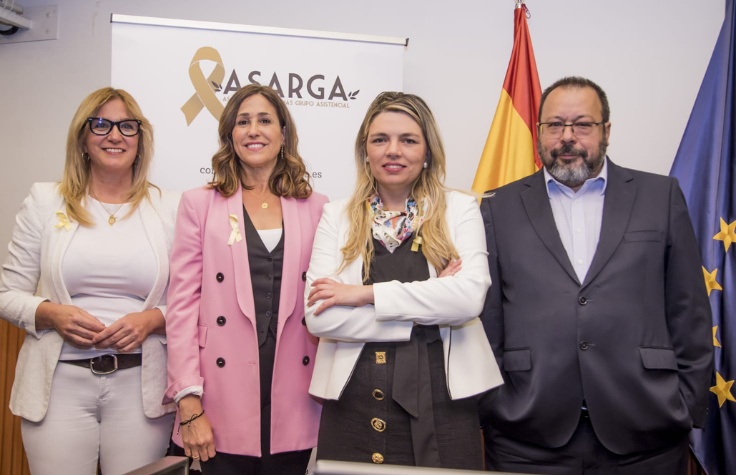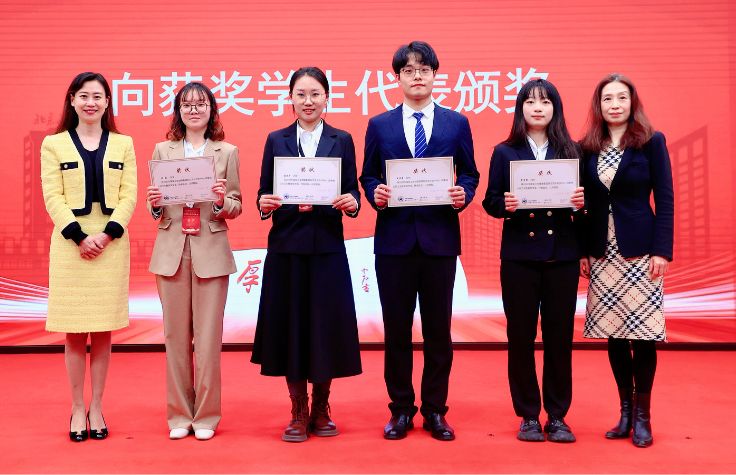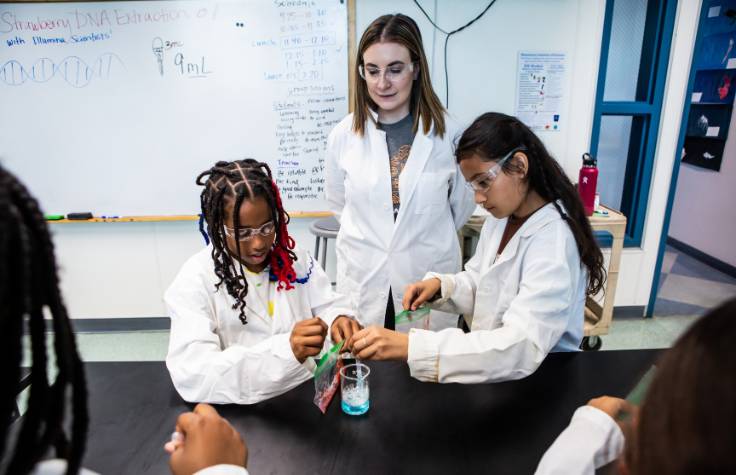
October 5, 2023
In 2016, Iara Mantiñán Bua was working as a freelance journalist in post-conflict areas such as Egypt and Qatar. She was covering Egyptian politics in the years following the 2013 military coup d’état when she noticed a mass in her right leg. Bua initially brushed it off, thinking it was a mosquito bite. “[If] you have a mass in your breasts, you’re very worried. But in the leg? I didn’t think it was something important,” she says.
That Christmas, she visited her family in Spain, her home country. Her godfather, a doctor, touched the mass and told her that she had to go to the hospital: the lump in her leg didn’t seem like a rogue mosquito bite.
On her godfather’s suggestion, Bua went to the hospital. After meeting with various specialists, one of them formally diagnosed her with an ultra-rare cancer: extraskeletal myxoid chondrosarcoma, a cancer of the connective tissue. Bua was 31 years old when she received the news.
This diagnosis quite literally changed her life. Surgeons operated on her leg and removed the mass, but a year later, in 2017, her cancer came back. By then, she was unable to work and was living on disability.
“In university, they teach you how to be [a] professional, how to progress in your field,” Bua says. “But they don’t teach you how to reinvent yourself if you get cancer and become disabled.”

As a patient, Bua learned that doctors had limited information about her condition—it was up to her to find answers. Thankfully, she was able to leverage her research and interview skills from working in journalism. Over time, she discovered there were seven hospitals in Spain specializing in sarcoma. And the country’s health system was decentralized, which meant if one hospital was conducting a clinical trial, the only way she could have found out is if she asked them directly. “You literally have to knock on their doors,” she says. Bua knocked on a lot of doors.
While on her quest for answers Bua started to share everything she learned about sarcomas on her blog and YouTube channel. Soon, many patients began reaching out to her. One Barcelona woman had been searching in vain for other sarcoma patients but did not find Iara’s blog until after her 18-year-old son passed away. (The woman, Raquel Rubio, ended up collaborating with Bua on a book compiling the experiences of nine patients, called El Sarcoma Día a Día.)
Through her research, Bua discovered the importance of genomic sequencing to identify cancer biomarkers that could match a patient to targeted therapies. After much determination and searching, she tracked down the name of a sarcoma expert and medical pathologist living across the country—over 900 km from where Bua lived. She did everything she could to connect with Dr. Enrique de Álava, director of the Anatomic Pathology Unit at a major hospital in Seville. Finally, with Dr. Álava’s help, in 2020, she submitted a tumor tissue sample for next-generation sequencing (NGS). The analysis revealed she had mutations in PI3K and IDH2, two genes normally involved in cellular metabolism. This allowed her to seek out targeted therapy, which has helped stabilize her disease since then.
Certainly this was a positive outcome for Bua, but she worried about other patients who did not have her resourcefulness or determination. Many patients mentioned to her that there was not much support available to them. Bua felt strongly that finding solutions in the healthcare system should not be so difficult. Bua began to wonder if there was a bigger way to support patients beyond documenting in her blog the steps she had taken to get specialized care.
When the world started to shrink due to Covid in 2020, Bua learned of another sarcoma patient in her hometown. Her aunt, a hairdresser, overheard that in their small town near A Coruña in northwestern Spain, someone else worked with a client who had sarcoma. Bua quickly connected with this woman, a small business owner named Carolina Castiñeiras Brandón. Over a series of conversations, the pair learned that despite having a different subtype of sarcoma they shared the same mutation, and the same passion for helping other sarcoma patients. At the time, Brandón was also involved in local politics—experience that would help in their advocacy efforts.
They founded ASARGA (Asociación Sarcomas Grupo Asistencial)—a patient-led nonprofit that not only raises awareness of the disease and advocates for patients, but provides case management services, specialized guidance, and support for patients and families. Most importantly, ASARGA helps patients find the right medical center with the aim of getting appropriate care. This, they believe, should be the right of every sarcoma patient. The way Bua sees it: an individual probably wouldn’t be able to affect systemic change, but an organization might.
ASARGA is currently lobbying the Spanish government to invest in a clinical pathway that would make NGS part of the standard of care for sarcoma patients. The rarity and wide variety of sarcoma tumors makes them difficult to diagnose and has hindered major advancements in new treatment options for these patients. NGS—especially comprehensive genomic profiling (CGP) or whole-genome sequencing (WGS)—would be critical tools in routine diagnosis and for optimizing therapy selection. CGP and WGS can help find targeted therapies for sarcoma patients based on alterations found in the tumor´s DNA.
Based on their experience, an investment like NGS improves the quality of life for sarcoma patients and ultimately, they believe, saves the healthcare system money by preventing costly hospitalizations due to side effects from chemotherapies. ASARGA is also mobilizing efforts at the European Union level to improve access to NGS and targeted therapies for sarcoma patients, which are not commonly covered by universal healthcare policies.
Illumina is supporting ASARGA through a donation. “ASARGA’s efforts to increase awareness around NGS technologies, particularly comprehensive genomic profiling and access to targeted therapies, is relentless,” says Piarella Peralta, who leads Patient Advocacy across Europe, Africa and the Middle East for Illumina. “They not only educate the public about the best care for sarcoma, but they also educate other stakeholders including government officials about the impact of innovative technologies to improve outcomes for this patient population.”
Bua is excited for ASARGA to realize its full potential. “We have to take a holistic point of view when we consider the regulations for patients,” she says. “This is the power that our association and [companies] like Illumina understand: we need resources and the support of industry—otherwise we are just volunteers without any voice.”
Bua was not tested using an Illumina diagnostic test. She is sharing her story as a testimonial of the potential benefits of biomarker testing though comprehensive genomic profiling (CGP). One person’s experience is not predictive of results in other CGP cases, which may differ based on a variety of factors. Results in other cases may vary.


